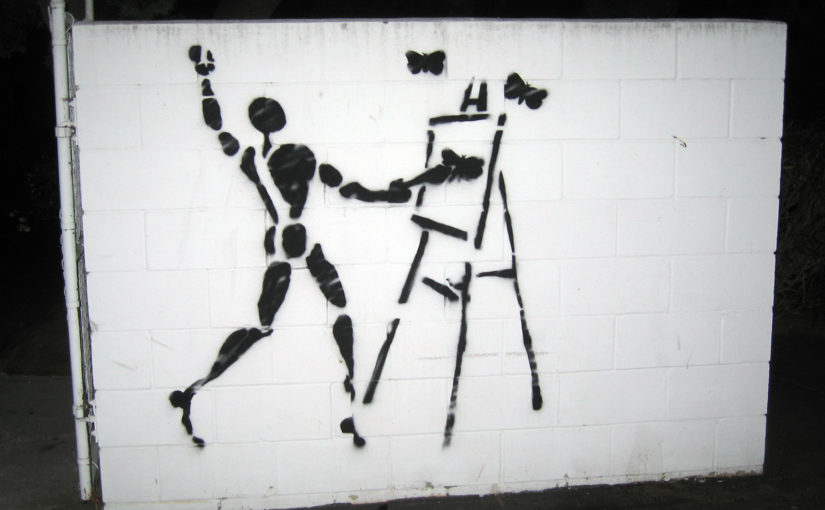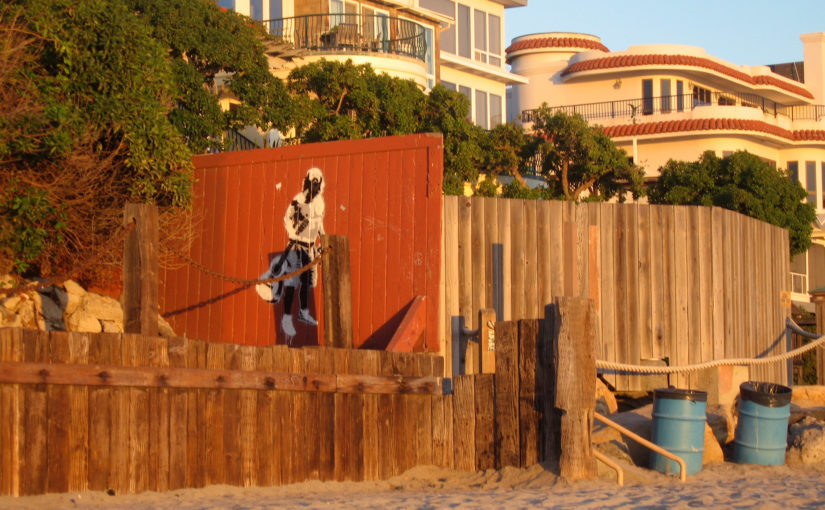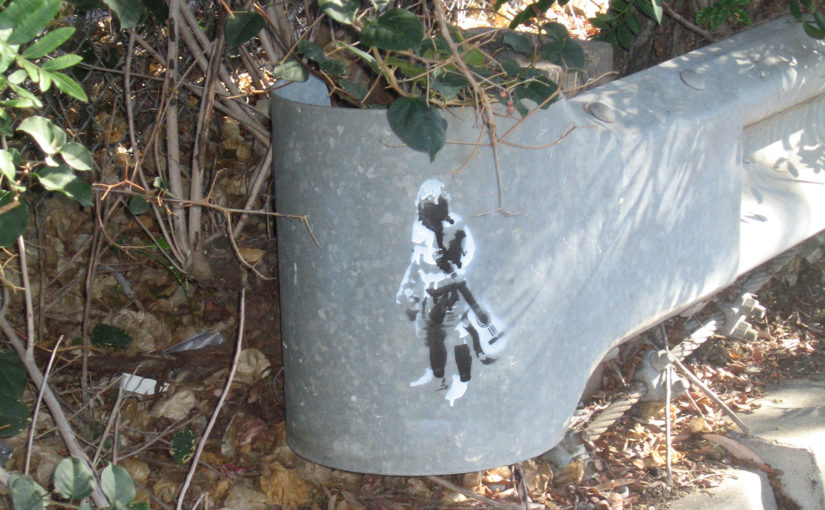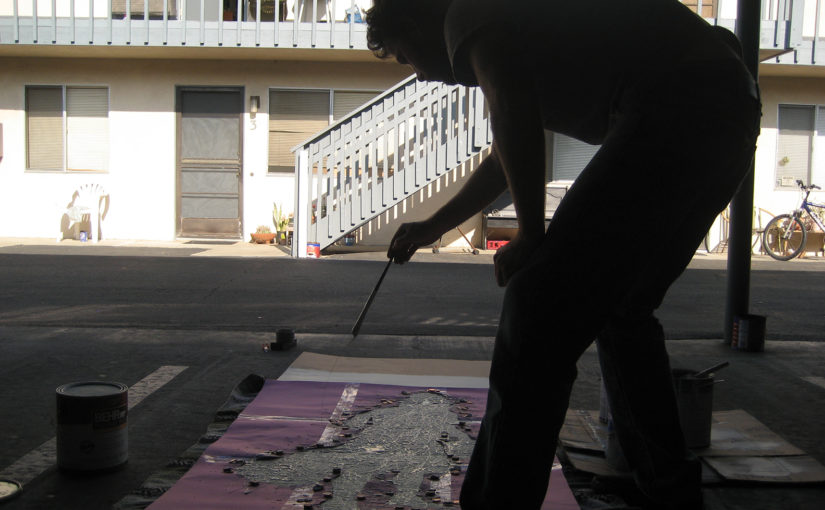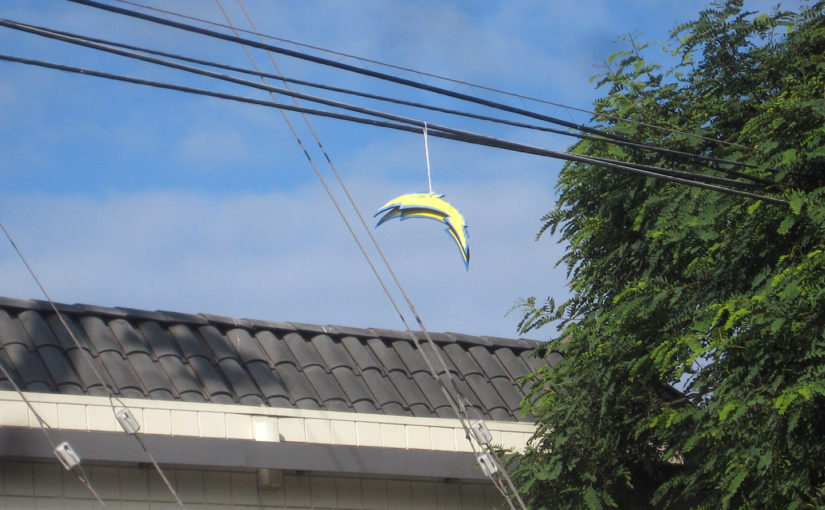![]()
After graduating college in 2005, I returned back to my hometown of Carlsbad where I began working for the City of Carlsbad as a junior graphic designer, and later for a screen printing company as a digital illustrator. As a fresh college graduate, my focus was on my digital arts career, though I continued to create smaller bodies of work and think conceptually.
I honed my digital illustration skills during a three year period designing graphics at Kapan Kent Co., Inc., a company in Oceanside specializing in the souvenir glassware industry. I would escape the long days in front of the computer by exploring the onsite factory where the screens were built, burned and used to print the designs directly on glassware. I became incredibly interested in this process and learned the screen printing workflow by interviewing the Spanish speaking factory crew.
I brought a screen printing set and began burning screens for t-shirt printing in the bathroom of a single bedroom apartment on Jefferson Street in the Carlsbad Village. I soon saw the parallels of screen printing and the technique of stencils recently learned about through the exposure of British artist Banksy. Though I continued producing screen prints, I shifted to creating digital illustrations for multiple layer stencil production—and the Carlsbad Village became my canvas.
My living quarter was overtaken by the creative process of stencil creation. My walls were scattered with large sheets of paper that I projected images onto and traced. The floor became a nest of hand-cut stencil remains and multi-colored stencil experiments sprayed on cardboard stacked up against the furniture. The one bedroom apartment was termed The Art-partment and was again living in a working studio—I was back in my element.
I was still working in the office as a digital illustrator, but I felt myself drifting in a new direction. I was showing up to work in the morning with freshly sprayed black fingers from my street art adventures the night before. I stared at the clock all day waiting for 5 pm when I would race home and prep the newest stencil design all night. As the Village fell asleep, I would enter the dark and quiet streets with freshly cut stencil in hand in search for blank walls to spray my designs onto.
Circa 2006, Carlsbad was primarily void of murals, or at least the mural culture that exists today. The streets were carefully manicured and art in the public space was restricted to tourist friendly iconography. Whether it was a result from the fiasco of what is now referred to as “the bars” public art pavilion, or simply a desire to keep the Village by the Sea as non-confrontational as possible, the local art scene lacked progressiveness; I felt the artistic culture was stifled because of it.
My goal for these early street art stencils was to introduce a more progressive aesthetic to the community, ultimately communicating to other progressive “closet artists” that there were indeed other artists with similar visual aesthetics and ideas in the community. I attempted to encourage the development of this more progressive art scene by encouraging these artists to show in coffee shops, exhibit at local galleries and share imagery online.
In order to connect with as many artists as possible, I knew the stencils needed to stay visible in the streets for extended periods of time. In order to increase longevity, I approached each street stencil implementation as an unaware commission between myself and the business owner. The relationship with the street stencil design and the surrounding environment was paramount. The stencils that remained in the streets the longest were those that connected to the community and the business it was sprayed on—many becoming sanctioned and lasting many years.
One day as I sat in the car port of the Art-partment thinking about past art movements and the artists that helped define them, I glanced through the open door of my exterior closet. A stack of used hand-cut stencils with black spray paint residue caught my eye. At that moment I happen to be thinking of abstract expressionist American painter Jackson Pollock and his drip art technique. The sight of the discarded stencils mused the idea of fusing Pollock’s gestural drip technique with the hard-edge and restrictive technique of Banksy‘s street art stencils.
The same carport where I had that eureka moment became my new studio. I bought up as much returned “Oops” paint from Home Depot, gathered discarded cardboard as early canvases and in 2008 I began drip painting.


